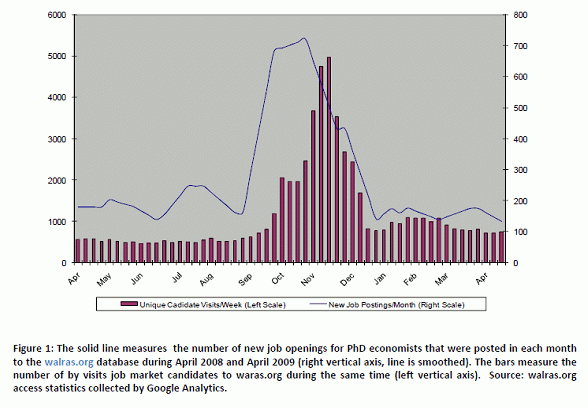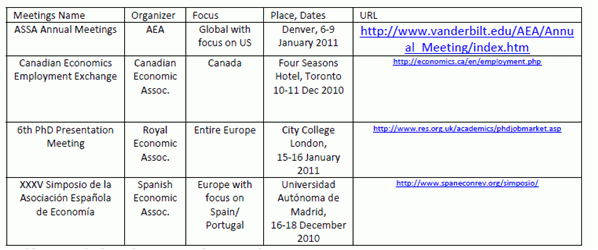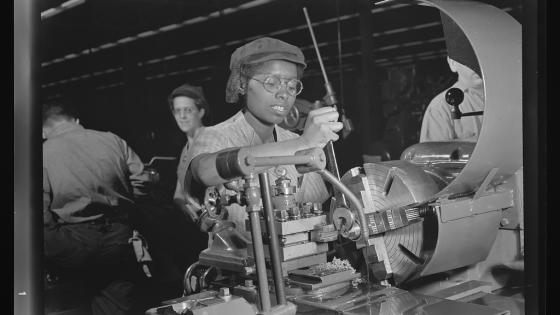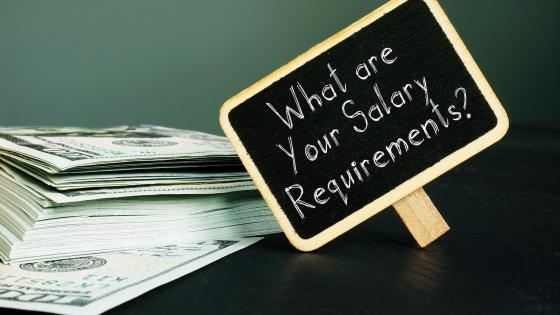Since market clearing is essential to economic analysis and because the design of market-clearing mechanisms is a large field of this science, one might assume that the market for economists is among the most structured and orderly of all. Alas, anyone who has participated in this market can confirm that it is definitely not orderly and that while it may be very structured, its structure only becomes clear once the job market is over for the year in question.1
The fact that a market can be “over” for the year highlights the first peculiarity of this market: it is highly seasonal since nearly all doctoral candidates graduate during the summer. In the late fall of the preceding year, nearly 1,000 doctoral candidates, mostly from US institutions but increasingly from Europe and the rest of the world, start job searches that may stretch until March and that may lead to a placement in the academic, government, or private sector. The market for these junior economists unravels in four main stages.2
Stage 1: Searching and applying (October – November)
In the first stage, recruiting institutions publish their job openings in a variety of print and online media.
As a centralised job portal, walras.org distributes your job openings to all junior job market candidates and a large number of more senior researchers. Our automatic posting system allows you to post job openings online. After we check these postings for consistency, we distribute them to over 100 placement officers at PhD-granting institutions all over the globe, who in turn forward them to their job market candidates. In addition, over 2,500 job market candidates have registered at walras.org and actively search our database.
Second, all vacancies that are entered in the database of walras.org are also automatically featured on www.voxeu.org/jobs/. As any reader of this column is probably aware, VoxEU.org gets around 25,000 individual visits each day, most of whom are trained economists; there have been visits from 4.7 million distinct IP addresses since the site was launched in June 2007. This makes VoxEU.org a natural place to hire economists and a natural place to publish your job opening.
Third, recruiters have the option to use walras.org’s online application system. This system allows you to receive a candidate’s CV, academic papers, and other application documents online. The system also allows the candidate’s reference writers to send their letters of recommendation to your institution directly. The system is programmed flexibly. For example, you can also scan and upload a letter that you have received via regular mail so that you can compile a complete application package for every candidate. Your recruiting committee then has access to all documents online and they can also share their comments using walras.org.
Posting jobs on walras.org is free of charge. You have the option to have your job posting featured for a fee.
In addition to posting your job on walras.org, jobs should be posted on the respective sites of the national economic associations and, in addition on “Job Openings for Economists” of the American Economic Association (AEA), which is the site with by far the widest reach.
When are most vacancies posted? The blue line in Figure 1 documents how the number of open jobs that are posted on walras.org varies throughout the year. The number of new jobs per month is in the 100-200 range throughout most of the year, but reaches more than 700 during October and November. The red bars in the same Figure show how actively job market candidates search for jobs throughout the same time span. The search intensity follows a similar seasonal pattern, albeit with a short lag. The intensity peak of job searches occurs during the week of November 18th, which is a common date for application deadlines.
Figure 1. New job openings and candidate search intensity throughout the year
In addition to posting, recruiters with specific needs might find it worthwhile to contact PhD-granting institutions directly and screen which students might be of interest. A list of most PhD granting institutions and their job market candidates can be accessed on http://www.nber.org/candidates/. We recommend that you contact the placement officers directly, since they often have a good knowledge of their students and might be able to point out a good match. In addition, some walras.org users have created public profiles, which you can browse through easily on the website once you are logged in to your recruiter account.
Stage 2: Conference interviews (late December – mid January)
In economics, it is common to interview a candidate at one of the large conferences before inviting her/him to a visit to the recruiting institution. Table 1 lists four of the main job market meetings, of which the Allied Social Science Associations meeting organised by the American Economic Association (AEA) is by far the most important one.
Table 1. List of job market meetings by national economic associations
A typical recruiter will attend only one of the above meetings and interview less than 30 candidates of the 100-1,000 who have applied. Since most of the applicants are eliminated already at this stage, choosing which candidates to invite to a conference interview is of first order for successful recruiting.
At this stage the exchange of information becomes very important. While one can rather easily form an idea about which candidate would be a good fit for the position in question, it is much harder to gauge which of the candidates are actually interested in the position. This is a major problem, since candidates are at this point not certain that they will get their desired job, or any at all. This causes candidates to frequently accept interviews for positions that they have little real interest in. In order to let candidates credibly communicate their preferences, the AEA has set up a signalling system. Should you receive such a signal, take a closer look at the candidate: they can send the signal only to two out of the typically over one hundred places they have applied at.
Stage 3: Fly outs and offers (mid-January – mid-March)
Based on the conference interviews, recruiters start inviting candidates to visit their institution for an entire day, which is called a “fly out”. A fly out typically involves a 90 minute seminar and a number of short meetings with potential colleagues.
Again, at this stage candidates frequently accept fly out invitations also for positions that they have little real interest in. Due to this, the job market thus takes time to unravel and top ranked academic institutions such as MIT move first, while other institutions typically wait and observe whether they have a chance of attracting the candidates they desire. There is also a considerable amount of information being exchanged informally. Some information on fly outs can also be accessed on http://bluwiki.com/go/Econjobmarket, but it should be noted that the latter information is entered anonymously and its accuracy cannot be guaranteed.3
After the fly outs, recruiters decide whether and to whom to make an offer. Candidates who receive offers remain risk averse and often sit on an unsigned contract, waiting to see if they receive a better offer. Because of this, most offers are valid only for a period of a week or two. Even with such limited contracts, the recruiter has to very carefully evaluate which candidate to give the offer too.4
At this stage of the market, again, much informal and unverified information is exchanged, some of which can be accessed on http://bluwiki.com/go/Econjobmarket.
Stage 4: Second round fly outs and the scramble (March – April)
Because the process of the job market is not perfect and often candidates end up without jobs offers while institutions have unfilled positions, second and third rounds of inviting candidates for fly outs are frequent. The AEA has recently formalised this process with their “Job Market Scramble”, which allows candidates to indicate that they are still available and also allows recruiters to indicate which positions are still available.
Recruiting PhD economists can be a peculiar and often draining experience. If it is done badly, the shoddy results can linger for years. If it is done well, history can be a fine judge. The tools on VoxEU.org and walras.org are there to help make sure you get as close as you can to the latter.
1 This document is intended for recruiting institutions. If you are a job market candidate, we recommend reading John Cawley’s overview of the job market for PhD candidates in economics.
2 As Richard Carson and Peter Navaro (1988, pp. 137-148) point out, In addition to the main job market, recruiters also do preemptive screening and try to “grab“ suitable candidates before they receive wide attention from the main market.
3 In addition, unverified information that is posted by anonymous users can be obtained on http://www.econjobrumors.com/. It has to be noted, however, that the tone of the posts on this board sometimes fails to reflect the education of the contributors.
4 A typical problem is the following. Consider a recruiting firm XYZ who has two candidates A and B, both of whom are good enough to do the job, but candidate A is somewhat preferred to candidate B. Candidate A, however, is very likely to get a more attractive job offer from another recruiter, while this is not likely for candidate B. The cost of giving the offer first to candidate A is that she will hold on to this offer until she receives a better one. In this time, candidate B could have accepted another time-limited offer, since she was not sure that she would get the offer from XYZ.







